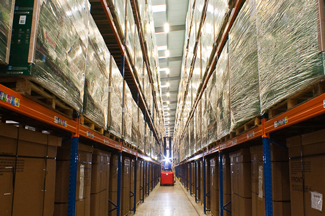The availability of warehousing space in the UK, which includes distribution warehouses scheduled for completion in the last three months of the year, increased to around 36 million sq ft – the highest third quarter recording since 2014 according to latest research by property consultant Colliers.
Though, it is worth nothing that based on the five year average take up of circa 30 million sq ft, this indicates that there is just above one year’s worth of supply available in the UK.”
Though, Andrea Ferranti, head of industrial and logistics research for Colliers International was quick to point out. “It is worth noting, that based on the five year average take up of circa 30 million sq ft, this indicates that there is just above one year’s worth of supply available in the UK.”
Demand for industrial and logistics space in Q3 2019 remained strong with take up reaching 21.9 million sq ft for the year so far and on track to exceed the 10 year annual average by the end of the year.
 Colliers’ research showed that take up activity for Q3 2019 was just shy of 9 million sq ft, for units over 100,000 sq ft, this is up 26 per cent on the same quarter last year, boosted by Jaguar Land Rover who, advised by Colliers, agreed a 2.94 million sq ft pre-let in September.
Colliers’ research showed that take up activity for Q3 2019 was just shy of 9 million sq ft, for units over 100,000 sq ft, this is up 26 per cent on the same quarter last year, boosted by Jaguar Land Rover who, advised by Colliers, agreed a 2.94 million sq ft pre-let in September.
Of space taken so far this year, design and build accounted for the majority of take up, with 55 per cent of overall activity. Meanwhile, lettings for speculatively-developed units accounted for circa 18 per cent and the remainder 27 per cent share resulted from second hand space.
Demand for space from general retail occupiers, which excludes pure-play retail, dropped from 24 per cent in Q1-Q3 2018 to 14 per cent in the same period this year, reflecting the retail sector’s high degree of risk aversion. On the other hand, third party logistics providers made up 28 per cent share in Q1-Q3 2018, as well as this year.
Len Rosso, head of industrial and logistics at Colliers International, said: “Although the industrial and logistics sector has remained seemingly sheltered by economic headwinds as occupiers have continued, albeit at a slower pace, to seek better and more operationally-efficient distribution warehouses to drive up profitability, those occupiers who can afford to postpone their property-related investment decisions are either extending their leases or resorting to third party logistics providers to de-risk and increase flexibility.”







